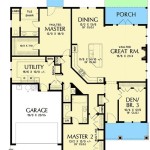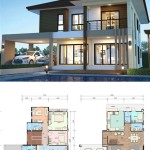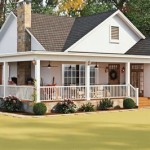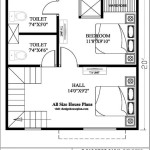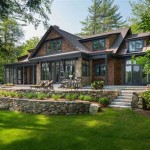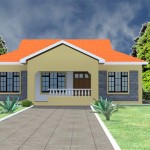English Cottage House Plans: Delightful Charm for Your Homestay
The allure of the English cottage house plan extends far beyond mere aesthetics. It represents a lifestyle, a romantic ideal, and a tangible connection to a simpler, more tranquil existence. This enduring appeal makes it an exceptionally attractive option for individuals seeking to establish a homestay business. The inherent charm of these designs, when executed with thoughtful planning and attention to detail, can significantly enhance the guest experience and command a premium in the hospitality market.
Unlike more modern or minimalist architectural styles, English cottage house plans evoke a sense of warmth, comfort, and history. They are characterized by their asymmetrical designs, steeply pitched roofs, dormer windows, and use of natural materials such as stone, brick, and wood. This combination of features creates an inviting atmosphere that resonates with guests looking for a unique and memorable stay. Furthermore, the adaptability of these plans allows for customization to suit the specific needs of a homestay operation, balancing functionality with the desired aesthetic appeal.
When considering an English cottage house plan for a homestay, several factors must be carefully evaluated. These include the size and layout of the property, the number of guest rooms required, the availability of amenities, and the overall integration with the surrounding landscape. A well-designed cottage homestay should seamlessly blend indoor and outdoor living spaces, offering guests opportunities to connect with nature and enjoy the tranquility of the setting. Moreover, accessibility considerations and compliance with local building codes are essential to ensure a safe and comfortable environment for all guests.
Key Point 1: Embracing the Architectural Details of English Cottage Style
The authenticity of an English cottage house plan lies in its meticulous attention to architectural details. These details not only contribute to the overall aesthetic appeal but also enhance the guest experience by creating a visually rich and immersive environment. The choice of materials, the design of the windows, and the integration of landscaping elements are all crucial factors in achieving the desired level of charm and authenticity.
Stone or brick exteriors are hallmarks of English cottage design, providing a sense of solidity and permanence. These materials can be complemented by timber framing, exposed beams, and other rustic elements to further enhance the cottage aesthetic. The selection of appropriate roofing materials, such as slate or cedar shingles, is also important to maintain the historical accuracy of the design.
Windows play a crucial role in defining the character of an English cottage. Casement windows with small panes, often adorned with flower boxes, are a common feature. Dormer windows, strategically placed in the attic space, can provide additional light and ventilation while adding visual interest to the roofline. The use of leaded glass or stained glass accents can further enhance the charm and individuality of the design.
Landscaping is an integral part of the English cottage aesthetic. A winding path leading to the front door, surrounded by lush gardens filled with colorful flowers and climbing vines, creates a welcoming and enchanting atmosphere. The inclusion of elements such as stone walls, water features, and herb gardens can further enhance the natural beauty of the surroundings.
Interior details are equally important in creating an authentic English cottage experience. Features such as fireplaces, exposed brick walls, and hardwood floors contribute to the warmth and character of the space. Incorporating antique furniture, vintage textiles, and handcrafted decorative items can further enhance the sense of history and charm.
Key Point 2: Optimizing Layout and Functionality for Homestay Operations
While maintaining the authentic charm of an English cottage house plan is essential, optimizing the layout and functionality for homestay operations is equally crucial for ensuring a successful business venture. The design should prioritize the comfort and privacy of guests while also providing efficient spaces for the host to manage the property.
Dedicated guest rooms are essential for a homestay operation. Each room should be designed to provide a comfortable and private retreat for guests, with ample space for sleeping, relaxing, and storing belongings. En-suite bathrooms are highly desirable, offering guests a greater degree of privacy and convenience. Attention should be paid to soundproofing to minimize noise disruption between rooms.
Common areas, such as living rooms and dining rooms, should be designed to encourage interaction and socialization among guests. A cozy living room with a fireplace provides a comfortable space for relaxation and conversation. A communal dining area allows guests to share meals and experiences. These spaces should be designed to be both functional and aesthetically pleasing, reflecting the overall charm of the English cottage style.
The kitchen is a critical area for homestay operations. It should be designed to be both functional and efficient, allowing the host to prepare meals for guests with ease. Ample counter space, storage, and high-quality appliances are essential. A breakfast bar or island can provide additional seating and workspace. The kitchen should also be designed to be visually appealing, seamlessly integrating with the overall aesthetic of the cottage.
Outdoor spaces, such as patios and gardens, should be designed to provide guests with opportunities to connect with nature and enjoy the tranquility of the surroundings. A covered porch or veranda offers a comfortable space for outdoor relaxation, rain or shine. A well-maintained garden with seating areas provides a peaceful retreat. Outdoor lighting can enhance the ambiance and extend the usability of these spaces into the evening.
Consideration should be given to incorporating features that cater to the specific needs of homestay guests. These may include a laundry room, a luggage storage area, and a designated parking area. Accessibility features, such as ramps and grab bars, may be necessary to accommodate guests with disabilities. A well-designed entry area with clear signage and information can enhance the guest experience from the moment they arrive.
Key Point 3: Integrating Modern Amenities While Preserving Cottage Charm
While the allure of an English cottage lies in its historical charm, incorporating modern amenities is essential for ensuring a comfortable and convenient stay for guests. The key is to integrate these amenities seamlessly into the design, preserving the overall aesthetic appeal while providing the conveniences that modern travelers expect.
Modern bathrooms can be integrated into an English cottage design without sacrificing the overall aesthetic. The use of high-quality fixtures, such as clawfoot tubs and vintage-style faucets, can enhance the charm of the space. Natural materials, such as stone and wood, can be used to create a warm and inviting atmosphere. Heated floors and towel warmers can provide added comfort.
Modern kitchens can be designed to seamlessly blend with the English cottage aesthetic. The use of traditional cabinetry, such as shaker-style or beadboard cabinets, can maintain the historical charm. Modern appliances can be hidden behind cabinet panels to minimize their visual impact. The inclusion of a farmhouse sink and a butcher block countertop can further enhance the cottage aesthetic.
Heating and cooling systems should be designed to be energy-efficient and unobtrusive. Radiant floor heating can provide a comfortable and consistent temperature throughout the cottage without the need for unsightly radiators. Air conditioning units can be concealed within walls or ceilings to minimize their visual impact. Smart thermostats can allow guests to control the temperature of their rooms with ease.
Modern technology can be integrated into the English cottage design without disrupting the overall aesthetic. Wireless internet access is essential for modern travelers. Televisions can be concealed within cabinets or behind artwork when not in use. USB charging ports can be discreetly integrated into bedside tables and other furniture.
Lighting is a crucial element in creating the desired ambiance. A combination of natural and artificial light is essential. Natural light can be maximized through the use of large windows and skylights. Artificial light can be provided by a combination of overhead fixtures, table lamps, and sconces. Dimmable switches can allow guests to adjust the lighting to their preferences.
By carefully integrating modern amenities while preserving the inherent charm of the English cottage style, homestay owners can create a truly unique and memorable experience for their guests. This approach not only enhances the comfort and convenience of the stay but also elevates the overall appeal of the property, attracting a wider range of discerning travelers.

English Cottage Bedroom Inspiration Ideas Pine And Prospect Home

Cottage House Plans Small Modern Floor Plan Styles

English Cottage Bedroom Inspiration Ideas Pine And Prospect Home

Cottage House Plans Small Modern Floor Plan Styles

English Cottage Bedroom Inspiration Ideas Pine And Prospect Home

Cottage House Plans Small Modern Floor Plan Styles

English Cottage Bedroom Inspiration Ideas Pine And Prospect Home

Cottage House Plans Small Modern Floor Plan Styles

English Cottage Bedroom Inspiration Ideas Pine And Prospect Home

Cottage House Plans Small Modern Floor Plan Styles
Related Posts

